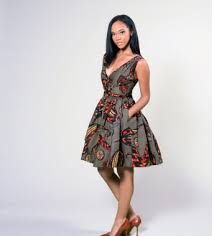A land full of wildlife and diverse cultures, Africa has a rich tradition in clothing. While most of Africa did not need clothes for warmth or protection, they were mostly used as an embellishment. Each culture has such an array of traditional clothing that it is mind-boggling.
Historically, most people, especially men did not wear any clothing at all! Instead, they decorated themselves with body paints and self-inflicted scars. Early Africans started using bark and skin for protection against the elements like any other primitive cultures across the world.
Later after discovering weaving, each culture created unique attire. Each region in this large continent developed a unique tradition in clothes. The clothes are often brightly colored. The beads and necklaces are often bright. But there ends the commonality.
As an example, many countries in West Africa have very distinct traditional clothing. Improvement in weaving, dyeing, and printing has resulted in a myriad of products that incorporated the Western styles with that of the traditional African styles.
The influence of Europe is started influencing the pan African clothing trends. Men in Africa started wearing long sleeve shirts and full-length trousers. The women’s dresses were influenced by the Victorian era costumes.
In Egypt, the traditional styles of women’s clothing were influenced by the Middle East. The Djellaba, which is similar to embroidered Jelabaya in the Gulf countries, is used in Northwest Africa. This is also like the Senegalese kaftan. Similar attire is found in Mali.
Later in the mid-20th century, there was a deluge of second-hand clothes from Western countries. The second-hand clothes were affordable and accessible to all. This resulted in a burst of innovation by the industrious African people. A delightful fusion was being created.
The people in Africa adopted the Western styles and inculcated some of their ethnic design in them. This was especially so in women’s attire. The pleats and the ruffles added a whole new dimension to their traditional styles. They created a unique style of their own with the fusion.
Stretch sequin fabrics and other western ones started being extensively incorporated into the traditional African attires. Pleats and ruffles soon started embellishing the women’s clothing.
Due to the diversity of the continent, it is impossible to list all of the delightful attires of Africa. But here are some of the great fusions made especially for the women-
1. Yoruba traditional wedding dress
The Yoruba wedding dress is called AlagaIjoko. The bride wears a Buba, an Iro, and a Gele. An Iro is a fabric tied around her waist and runs to the ankle, Buba is a blouse, and Gele is an African headscarf.
2. Zulu traditional wedding dress
The bride is adorned in an Isidwaba, Inkeli, and an Isicwaya. Thin skin and leather are the materials used here.
3. Cameroon Atoghu dress
Recently, when their national team was dressed in an Atoghu for the Olympics, it took the entire world by storm. The bride wears the Atoghu with brightly colored floral patterns and black detail.
4. Cold shoulder shift Ankara dress
This dress makes for the perfect dress for formal occasions. You can switch from shoes to heels to make it a perfect partying dress.
5. Bloom gathered Ankara print dress
This is a great fusion of African prints and Western ruffles. This gathered attire is great for parties and formal occasions.
6. High waist kitenge pants and different African print top
This a great fusion of bold African prints with a Western outfit. Great for parties and formal occasions.
7. Senegalese Kaftan– Senegal
The Senegalese Kaftan is influenced by the Middle East styles. This is delightful free-flowing attire with ornamentally decorated borders.
8. Kanga/Leso –Kenya and East Africa
It is a gown like dress that is great for partying and relaxing. It has bold African patterns and can be embellished with ruffles and plaits.
9. Dashiki – Yoruba and Hausa people of Nigeria
This is a delightful knee length gown similar to the Kanga/Leso, only shorter. These are great for casual wear and can be embellished with ruffles.
Maasai Shuka – Kenya and East Africa, Kitenge – East Africa, HabeshaKemis – Ethiopia, Maasai Shuka – Kenya and East Africa et all are examples of European fusion with traditional African attire.








